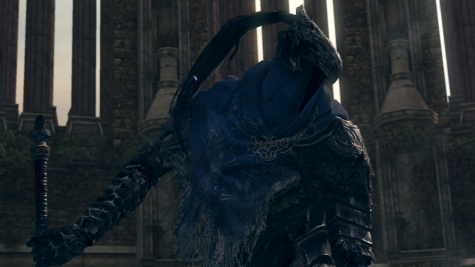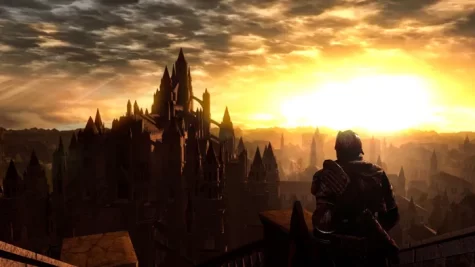The complex legacy of “Dark Souls”
“Dark Souls” is an action, role-playing game set in a dark fantasy setting. The legacy of this iconic video game lies within its difficulty, level design and interwoven storytelling. (Photo courtesy of FromSoftware)
March 1, 2023
If there is one game that should be considered one of the most influential games of all time, it would be “Dark Souls.”
Released in 2011, “Dark Souls” is a fantasy action role-playing game developed by FromSoftware. The game takes place in the kingdom of Lordran, where players assume the role of a cursed undead character who begins a search to discover the fate of their kind.
“Demon’s Souls,” released in 2009, was FromSoftware’s first attempt at a challenging game set in a fantasy world. But “Dark Souls” was the game that really launched this type of video game into popularity and labeled FromSoftware as an influential video game developer in the industry today.
“Dark Souls” stands out from other games because the best playthrough of the game is the first one. Due to the difficulty of the game, you are always on your toes, not knowing what lies behind each corner. But that curiosity and wonder push you forward to explore, and the world of “Dark Souls” is worth exploring.
Every area in the game feels distinct but connected in a way no other video game has done before. It takes the stereotypical fantasy setting but turns it on its head by making everything feel dreary and interconnected. Take the center area, Firelink Shrine. From this area, you are able to access seven other areas. Most of these areas are much higher level than the player, resulting in a probable death.
It’s up to the player to find the right way in this dreary maze of a world, but having the player figure out where to go helps them become aware of their surroundings and remember where they are and where to go next. Few games push the player to explore like “Dark Souls” does, but exploration isn’t the only way the game pushes the player.

The difficulty of “Dark Souls” is the most notorious aspect of the franchise. Level design, common enemies and boss fights are all centered around challenging the player. Death is very common, as progression is only made by learning from mistakes.
The biggest example of this are “souls,” the currency the player uses to level up and purchase materials and gear. When you die, the player drops all of their souls. The player has the opportunity to return to the spot they died and pick them up, but if they die again before picking them up, the souls are lost forever. This is matched with enemies that can kill you in a few hits and level design that is so atypical from other games that it forces the player to think more about what they are doing. Most deaths will be the player’s fault, so the ability to learn and think more about the game results in a more immersive experience.
Everything from items, enemies, boss fights, non-playable characters and environments are connected to create an immersive experience. A major example is dying and respawning. In other games, there is no explanation for why your character is able to respawn beside it just being a video game. In “Dark Souls,” dying and respawning are the most important aspects of the story of the game.
The playable character is a cursed undead, someone who cannot truly die. Instead, each death brings them close to hollowing, or loss of sanity and purpose. It’s rare to see a game developer put so much care into the details of the world that in-game mechanics are a part of the story and lore. Even more impressive is how everything comes together to push one central idea in both gameplay and story.

The true legacy of “Dark Souls” is how it presents itself in not only its gameplay but its story about persevering overwhelming odds.
As stated before, the chosen undead the character plays to prevent going hollow by finding purpose and striving towards a goal. Otherwise they will lose their mind and sanity. Every person’s goal from the start of playing a video game is to complete it. For those who never do, their character goes hollow because they quit.
Even though the game is difficult, confusing and vague, it still encourages you to persevere through conversations with other characters and the checkpoints placed exactly where you need them. You will die and fail a lot in this game, but no matter how difficult or impossible the road ahead may seem, if you keep pushing and learning from your mistakes, you will succeed. That success can only be felt in a game like “Dark Souls.”
The legacy of “Dark Souls” gets muddled as the years go on. Everyone knows about the game’s difficulty, but that’s it. Even though the game is difficult, the amount of depth and creativity in the world and level designs as well as the satisfaction of overcoming incredible challenges is the true legacy of “Dark Souls.”






